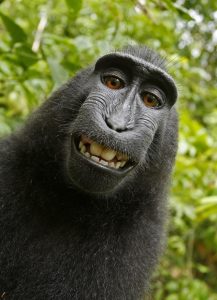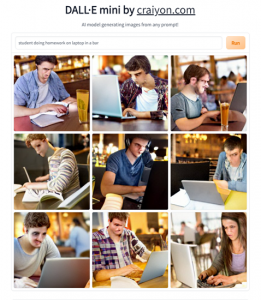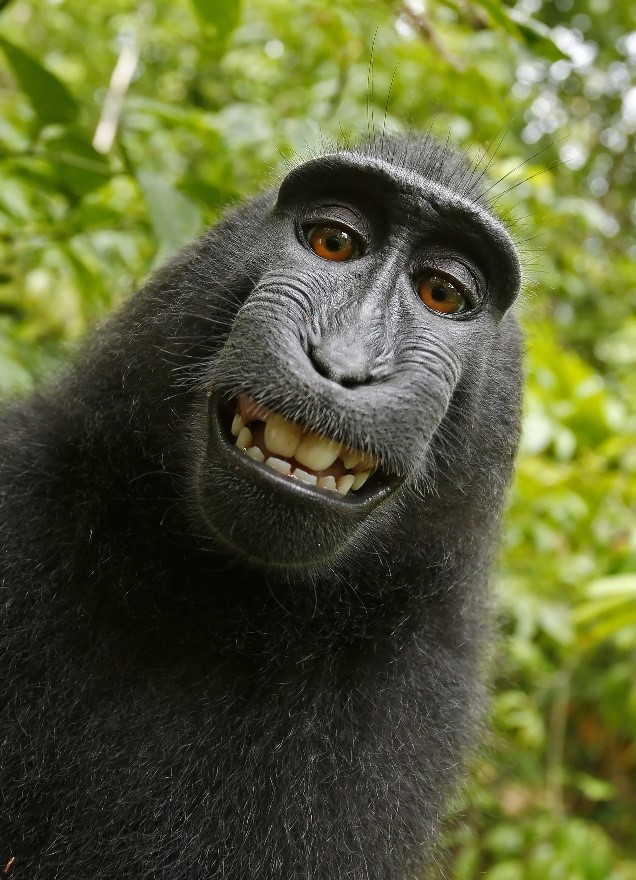As technology develops, the growing presence of Artificial Intelligence (AI) within our lives becomes more prominent. AI predicts what we want to watch on TV, what food we want to eat, and what we want to type. The predictive abilities of AI have begun to even encroach upon the creative space. The use of AI as a tool in arts and science is not new, however. Scientists have used the residual processing power from video game consoles to assist AI in processing models for the potential folded structures of proteins. What is new however is the use of AI to create a new product with little human input entirely.
This raises important questions in intellectual property (IP) (Particularly in the fields of patent and copyright law.) If an AI invents something useful or creates an expressive work, who will own the IP in that work? If the invention is patentable, who is the inventor? The AI or the creator or owner of the AI? Similarly, if an expressive work is copyrightable, who is considered the author? Answering these questions is essential in determining who will ultimately own the IP.
Thus far, the question of AI inventorship or authorship has hinged on the fact that such creations are a result of a non-human entity. To begin to understand how such creations from non-human entities are treated, we first look at how non-human authorship is treated by the courts. We will start at the beginning – before AI was considered an inventor.
Monkey-See Selfie, Monkey-Do Selfie
The case Naruto v. Slater, gave us the hilarious predicament in which the courts had to determine whether a monkey was entitled to the copyright interest in a selfie that it took. Wildlife photographer David Slater, set up a camera in an Indonesian reserve. Eventually, a monkey named Naruto interacted with the camera. The monkey smiled at it, and incidentally took a selfie. The photo was lauded and included in Slater’s book, listing Slater as the copyright owner of the monkey selfie.

In comes the People for the Ethical Treatment of Animals (PETA). PETA filed suit on behalf of Naruto asserting that the monkey was the true owner of the copyright as the author of the photo. Under US copyright law, the author of the work is the one who actually creates the work in question (unless it’s a so-called “work made for hire” that would not apply here since that involves works created for someone, such as an employer).
On Appeal, the Ninth Circuit ultimately decided that the monkey does not have standing to sue for infringement (i.e. violation) of copyright in the picture. The court found that the language in the Copyright Act implied a requirement of humanity when assessing whether an animal could sue for infringement. The district court before it found that the an animal couldn’t own the copyright on the selfie because it wasn’t human and cited the Copyright Compendium, a guide created by the Copyright Office for its staff, to support its decision. Naruto was out of luck, the copyright on the selfie was not his to own.
In a separate dispute, the same monkey selfie was uploaded to WIKIcommons without Slater’s consent. Slater’s ownership of the copyright was subsequently challenged. In that case, the U.S. Copyright Office also weighed in. The Copyright Office determined that Mr. Slater, the photographer who set up the camera, didn’t own the copyright on the monkey selfie either. The Copyright Office also cited human authorship as a requirement for copyright protections as noted in Chapter 300 of the Copyright Compendium. The US Copyright Office finds justification for this in the labor theory of copyright. The theory states that the purpose of copyright is to protect the fruits of one’s intellectual labor that “are founded in the creative powers of the [human] mind.” And while the Copyright Office decisions and compendium are not binding on courts, their decisions and internal practices remain persuasive in instances such as the Naruto v. Slater case. This only further adds fuel to the human-authorship-requirement fire.
With both the courts and copyright office having required authorship be human, the question of the copyrightability of AI generated content gains some much needed clarity.
Copyright Elements: Human Authorship and Creativity
If this seems confusing, when we break down the elements of copyright, the reasoning of the courts and the copyright office becomes more clear. To achieve copyrightability typically, an expressive work must meet the following requirements. The work is:
- “Original” to the author,
- Consist of at least a modicum of creativity, and
- Is fixed in a tangible medium of expression
These factors prompt a few questions. Does an AI express any sort of creativity in keeping with the requirements of copyrightability?

Proponents for the copyrightability of AI generated content may argue that the inputs and programming that is required to set up an AI to in turn generate content constitutes the creativity necessary to satisfy the requirement. So, the AI itself wouldn’t be providing creativity. Analogizing this to the monkey selfie problem, the creativity needed to meet copyrightability requirements would be the set-up of the camera and any other creative decisions that went into its setup. Even though such creativity could be applied to the satisfaction of the contested creativity requirements, the question of whether the work is ‘original’ to the author still remains. The product is still ultimately being generated by the AI; the photo is still ultimately being taken by the monkey.
It seems, that things don’t bode well for the bots. But is any expression involving AI barred from copyrightability? Not necessarily. Let’s consider an example.
Procedural Generation
One manifestation of AI generated content is the advent of procedurally generated video games. In the case of these games, the developer dictates a procedure, or rules, for an AI to follow, then the AI continually generates content based on these rules for the game as it progresses. The AI pulls from a pool of content that may be authored by the human developer to generate these games. A player could play the game all the way through one time. Upon replay, the layout of the map changes, the enemies populating each room is randomized, and any loot found is changed subject to the rules laid out by the developer. Popular games like Enter the Gungeon or No Man’s Sky utilize these tools to create their gameplay experiences.
Because an AI is continuously generating these changes within the game, does this make the game unprotectable by copyright? The AI generated level layouts, obstacles, and rewards may not be copyrightable. These elements lack the human authorship that is suggested to be necessary for copyright protection. However, the artistic elements, written story components, and the code used to create these games could be protected by copyright as long as they are authored by humans (and otherwise meet the requirements such as being minimally creative). In this way, developers can still maintain protections on their work despite an AI generating so much of what makes the game playable.
Inventor Ex Machina
With patent law, the requirement for human inventors has had support from the US Patent and Trademark Office (USPTO) and more recently has gained support in case law. Human inventorship has historically been important to the USPTO. In 35 U.S. Code § 101, the statute states that “Whoever invents or discovers any new and useful process, machine, manufacture, or composition of matter, or any new and useful improvement thereof, may obtain a patent…” The USPTO in denying a patent in which an AI was listed as an inventor read the term “Whoever” in 35 U.S. Code § 101 to imply humanity. The Federal Circuit in a recent case, interpreted the statute in the same way.
The human inventor requirement also has support in other parts of patent law. One of the fundamental requirements for a valid patent is correctly listing inventors on the application. Naming the correct inventor on a patent is vital. If a false or improper inventor is listed, the validity of the patent may be at risk if not corrected. To correctly name the inventor, you must determine who came up with or “conceived” of the idea for the invention. Conception in this context was defined as “the formation in the mind of the inventor, of a definite and permanent idea of the complete and operative invention” in Hybritech, Inc. v. Monoclonal Antibodies, Inc. Herein lies the problem: if an AI conceived of the invention and AI inventors are not allowed to be listed on an application, the invention is therefore not patentable.
This presents a few questions: how involved can an AI be in conception of the invention such that the inventorship can still be human? Also, if the courts broaden the interpretation of “whoever” in 35 U.S. Code § 101 to include AI inventors, how does this affect the rest of patent law?
AI Assisted Invention Conception
AI has been involved in scientific research such as bioinformatics for some time. Bioinformatics utilizes computer science, mathematics, physics, and biology to generate and analyze data. AI can aid in such research by letting it handle certain essential techniques that are used in the drug discovery process. While the era for AI-made discoveries is already here, the development of more complex AI computational infrastructure will only result in more AI involvement..
AI contributions to conception have seemingly not been a major issue to patentability thus far. But when is that line crossed? At what point is control relinquished to the monkey, or AI, such that the human involved is no longer entitled to the fruits of their intellectual labor? Perhaps the courts will weigh in on this question of threshold as the lines continue to get blurred.
iRobot, uPHOSITA
AI inventorship and the increasing involvement of AI theoretically has the potential to render everything unpatentable in time by disqualifying patentability under the ‘obviousness’ standard.
One of the requirements for patentability is that the proposed invention must not have been obvious to a person having ordinary skill in the art. This means that the invention in a specific field must not have been logically apparent to someone who is trained to work in that field. If the definition of inventor is broadened to include AI, the lines between what is obvious and what isn’t becomes even blurrier. As AI develops, its processing power and sophistication will only grow. An AI can potentially work through thousands of ideas and combinations at a pace that humans cannot. If inventorship is broadened to include AI, what is logically apparent in light of the obviousness standard becomes virtually meaningless. What could be considered obvious would be further broadened to include what an infinitely more sophisticated AI could conjure. Everything becomes obvious.
Future of the IP Landscape
By defining authorship and inventorship to imply humanity, the courts, the USPTO, and the US Copyright Office have put the nail in the coffin for AI owned copyright and patents (unless Congress steps in or the US Supreme Court rules otherwise.) Questions about AI and IP are far from settled however. As AI increases in sophistication, the question of whether AI assisted content merit IP protections will only increase as innovators and artists will grow to rely on the powerful tools that AI can offer. Consequently, the IP landscape has the potential to radically change within the next decade and I’m excited for whatever happens. More IP law for me to learn!
Louay Meroueh
Publication Editor
Former Director of Programming for the Intellectual Property Law Society
Technical Editor for the Rule of Law Institute
Loyola University Chicago School of Law, J.D, 2023

